
- •Соntents
- •About myself and my family About Myself
- •Appearance - внешность
- •My Family Family, Relatives - Семья, родственники
- •Character – Характер
- •3. Solve the puzzle and put together all the left letters to make the word:
- •4. Match the opposite words:
- •5. Solve the crossword:
- •6. Match the opposite words:
- •7. Guess the surmane according to the description:
- •8. Complete the sentences. For example: My grandmother’s husband is my grandfather.
- •9. Describe your groupmate using the familiar words.
- •III. Remember the following words and expressions:
- •IV. Fill in the gaps of your own genealogical tree in English:
- •About Myself and My Family
- •1. Make up the sentences out the given words:
- •VIII. Make up the dialogue of your own.
- •Just for fun the crowd
- •In a train car
- •I. Memorize the following words:
- •II. Read and translate the text: Home
- •III. Answer the questions:
- •IV. Fill in the blanks with prepositions and adverbs where necessary.
- •V. Translate into English
- •VI. Put the proper expressions into the sentences:
- •VII. Fill in the blanks with house, home, or block.
- •VIII. Describe the pictures and say what you would add or you would remove because it seems to you uncomfortable or out-of-date.
- •IX. Add to Your Active Vocabulary
- •Conversational Formulas:
- •X. Make up statements or questions for which the following could serve as response. Use the words and expressions suggested below:
- •XI. Look at the pictures. Think who can live in this flat(or rooms separately), and say why there is such a mess.
- •XII. Dialogues
- •1. Renting a Room
- •2. We Are Building a House of Our Own
- •3. Read the conversation between Kelly and her mother and describe the house and the garden Kelly is speaking about.
- •XII. Here are given the ads of people who need accommodation. Choose 3 ads and write the announcements that can interest them. Accommodation Required
- •Our university
- •I. Read the following words and word combinations paying attention to their pronunciation:
- •II. Read and translate the text: Our University
- •III. Find out the sentences which correspond to the text. Correct the wrong sentences in accordance with the text:
- •IV. Give English equivalents to the words in brackets:
- •V. Find the corresponding translation of the words and word combinations:
- •VI. Translate the sentences into English:
- •VIII. Dialogues
- •1. Read the dialogue and reproduce it inserting the necessary words. At the University Museum
- •2. Think of the situation: what you would say if you took part in this dialogue. Dramatize it. At the University Museum
- •3. Make up a dialogue on the following situation using the given vocabulary and conversational phrases. At the University Museum
- •4. Read the dialogue and reproduce it inserting the necessary words and phrases. At the Youth Commitee
- •5. Fill in the gaps with proper phrases and sentences given and act out the following conversation in pairs:
- •At the Youth Committee
- •6. Make up a dialogue on the following situation using the given vocabulary and conversational phrases:
- •7. Read the dialogue and reproduce it inserting the necessary words and phrases.
- •Read for yourself Oxbridge
- •I. Remember the following words and word combinations
- •II. Read and translate the text: Student’s Life
- •III. Add to your active vocabulary:
- •V. Translate the expressions into English and memorize them:
- •VI. Insert the correct prepositions where necessary:
- •VII. Put the proper expressions into the sentences:
- •VIII. Translate the sentences into English:
- •IX. Dialogues
- •1. Imagine you are talking to Natalie. Fill in the gaps:
- •2. Put the proper expressions into the sentences: Examinations at the University
- •3. Read, translate and learn the dialogue by heart. A telephone call
- •X. Memorize the proverbs and sayings and use them in the situations of your own:
- •XI. Using the vocabulary of the lesson speak about:
- •Just for Recognition Bologna Process
- •Environment
- •II. Read and translate the text: Environment
- •III. Answer the following questions:
- •V. Match the words:
- •VI. Join the following definitions with correct answers:
- •VIII. Read and translate.
- •IX. Decide what kind of weather is described in each situation.
- •X. Creative work
- •XI. Fill in the blanks with appropriate prepositions.
- •XII. Issues for discussion
- •Some curious facts Thunderstorms
- •Finding And Collecting Water
- •Attention!
- •Health at the doctor’s
- •I. Remember the following words and word combinations:
- •II. Read the text: At the Doctor’s
- •III. Translate the word combinations into English:
- •IV. Match the words:
- •V. Read the sentences and translate the Russian words and word combinations into English:
- •VI. Make up the questions to the following answers:
- •VII. Dialogues
- •1. Read and translate the dialogue. Roleplay the situation.
- •2. Look through the dialogue. Add the words of the patient. Roleplay the situation.
- •3. Read the dialogue. Translate the words of the doctor.
- •4. Between Two Boys on Injuries
- •5. At the Dentist's
- •7. Read the dialogue and learn it by heart. A Visit to the Doctor
- •VIII. Make up the dialogues. Roleplay the situation.
- •IX. Tell the story about visiting the doctor. Stages for actions:
- •Sport and a healthy life style
- •I. Read the following words paying attention to the pronunciation:
- •Indoor games:
- •II. Match the description with the sport:
- •III. Match the words:
- •IV. Solve the crossword.
- •V. Make up your own crossword.
- •VI. Odd one word out:
- •VII. Do, Play or Go with Various Sports.
- •VIII. Interview your partner. Tell about your partner:
- •IX. Remember the following words and word combinations:
- •X. Read and translate the text. Sport and a Healthy Life Style
- •XI. Match the English phrases with their Russian equivalents:
- •XII. True or False? Prove your answer using the sentences from the text above:
- •XIV. Discuss the following questions with your partner and prepare a report “What you can do to be healthy”:
- •XV. Dialogues
- •1. Lifestyle
- •XVI. Tell about how to keep a healthy life style. What are the basic types of food a person should eat?
- •The republic of kazakhstan political structure, geography and economy
- •I. Read the following words and word combinations paying attention to their pronunciation:
- •II. Read and translate the text: Political Structure, Geography and Economy
- •III. Translate the following word combinations into Russian:
- •V. Find the Russian equivalents to the following words and word combinations in the right-hand column:
- •V. Answer the following questions:
- •Astana – the capital of kazakhstan
- •I. Read the following words and word combinations paying attention to their pronunciation:
- •II. Read and translate the text: Astana – the Capital of Kazakhstan
- •III. Translate the following word combinations into Russian:
- •II. Read and translate the text: Karaganda – My Native City
- •III. Answer the following questions:
- •IV. Translate the expressions into English and memorize them:
- •V. Insert the correct prepositions where necessary:
- •VI. Put the proper expressions into the sentences:
- •VII. Translate the sentences into English:
- •VIII. Add to your active vocabulary
- •IX. Dialogues
- •2. Fill in the correct prepositions if necessary . You may use them not once: of, in, on, from, by, at, along, off, to, about.
- •3. Add a beginning to each point:
- •X. Directions
- •1. Look at the map of Chesswood and find these things:
- •2. Read these descriptions and add the places to the map:
- •4. Listen and check.
- •XI. Using the vocabulary of the lesson speak on the following:
- •Facts only Soviets say Talking Elephant Has Human Parents to Talk
- •Traditions and holidays of kazakhstan nauruz
- •I. Read the following words and word combinations paying attention to their pronunciation:
- •II. Read and translate the text: Nauruz
- •III. Translate the words in the brackets into English:
- •IV. Find the Russian equivalents to the word combinations in the left-hand column:
- •V. Find the corresponding endings of the sentences and translate them into Russian:
- •I. Read the following words and word combinations paying attention to their pronunciation:
- •II. Read and translate the text: People of Culture and Science of Kazakhstan Culture
- •Science
- •III. Read and translate the following word combinations:
- •IV. Find the Russian equivalents to the word combinations in the left-hand column:
- •V. Be ready to speak about some famous Kazakhstani people. Use some additional information. The united kingdom of great britain and northern ireland political structure, geography and economy
- •I. Read the following words and word combinations paying attention to their pronunciation:
- •Political Structure, Geography and Economy
- •IV. Find the corresponding translation of the words and word combinations:
- •V. Answer the following questions:
- •VI. Translate the sentences into English:
- •VII. Find out the sentences which correspond to the text. Correct the wrong sentences in accordance with the text:
- •VIII. Dialogue Read, dramatize and learn the dialogue.
- •IX. 1. Suppose you had a chance to see the uk from the bird sight. What did you see?
- •2. Look at the map of Great Britain and speak about the most important industrial centers. Facts only
- •London - the capital of the united kingdom of great britain and northern ireland
- •I. Read the following words and word combinations paying attention to their pronunciation:
- •London – the Capital of the United Kingdom of Great Britain and Northern Ireland
- •III. Translate the words in the brackets into English:
- •IV. Find the corresponding translation of the words and word combinations:
- •V. Answer the following questions:
- •VI. Translate the sentences into English:
- •VII. Find out the sentences which correspond to the text. Correct the wrong sentences in accordance with the text.
- •VIII. Fill in the gaps with words and expressions given in English and put them into the right place. Do not forget to use the correct form.
- •XI. Dialogues Dialogue 1. Read the dialogue and learn it by heart.
- •John– Oh, England!
- •Traditions and holidays of the uk
- •I. Read the following words and word combinations paying attention to their pronunciation:
- •II. Read and translate the text: Traditions and Holidays of the uk
- •English Pancake Recipe
- •III. Translate the words in the brackets into English:
- •IV. Find the corresponding translation of the words and word combinations:
- •V. Answer the following questions:
- •VI. Translate the sentences into English:
- •VII. Find out the sentences which correspond to the text. Correct the wrong sentences in accordance with the text:
- •VIII. Find some additional information about British holidays and traditions and tell us about them. People of culture and science of the uk
- •I. Read the following words and word combinations paying attention to their pronunciation:
- •II. Read and translate the text: People of Culture and Science of the uk
- •People of Culture
- •Extract from “My Heart's in the Highlands”
- •People of Science
- •People of Music
- •III. Translate the words in the brackets into English:
- •IV. Find the corresponding translation of the words and word combinations:
- •V. Translate the sentences into English:
- •VI. Find out the sentences which correspond to the text. Correct the wrong sentences in accordance with the text:
- •VII. Find more information about famous people of the uk and present it in the auditorium.
- •VIII. Dialogues
- •Dialogue 2.Complete the following dialogue using the active vocabulary.
- •Dialogue 3. Complete the following dialogue using the active vocabulary.
- •Appendix kazakh national traditions, sports and games
- •List of literature
II. Read and translate the text: People of Culture and Science of Kazakhstan Culture
The land of Chinghiztau gave the mankind a lot of talented people – poets, writers, musicians, painters. The most ancient works of art on the territory of Kazakhstan are the petroglyphs of animals in the Karatau mountains. Otrar earthenware with elegant ornament is referred to the samples of decorative applied art. This tradition has been kept up to now – yurtas, household articles are decorated with original ornaments.
The history of painting began in the XIX century when Russian painters visited Kazakhstan. They made drawings reflecting the life of the Kazakh people. Nickolay Khludov (1850 – 1935), a Russian painter, graduated from Odessa art school and lived in Kazakhstan for 50 years. He dedicated all his works to the Kazakh land and people.
A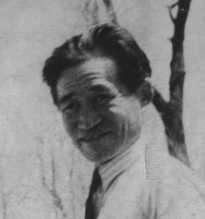 bylkhan
Kasteev
(1904-1973) was one of the first Kazakh painters to devote his whole
life to painting professionally; combining the traditions of
European art with specific Kazakh features. His Art, which is
genuinely national has played an important role in the development
of Kazakh and Central Asian Art.
bylkhan
Kasteev
(1904-1973) was one of the first Kazakh painters to devote his whole
life to painting professionally; combining the traditions of
European art with specific Kazakh features. His Art, which is
genuinely national has played an important role in the development
of Kazakh and Central Asian Art.
His first works date back to 1927 and mark the beginning of a long artistic career during which he produced more than 1,000 pictures in a variety of genres. The lack of an academic education was offset by his sincerity, hard work, curiosity and perseverance.
Abylkhan Kasteev’s art, in all its diversity, is full of authentic talent and spiritual purity, of love for his homeland and its people. His landscapes are characterized by subtle harmony and all-pervading poetry. In his portraits, either of ordinary people or of eminent personalities, Kasteev sought historical accuracy and adopted a monumentalist approach to the depiction of the character which was extremely expressive.
Kazakhstan’s Museum of Art has been named after him and his works are to be found in museums in the Commonwealth of Independent States and in private collections abroad.
M agnificent
art of the artistAibek
Begalin
from Karaganda for a long time attracts attention of art critics,
collectors defining his place in cultural space of the modern fine
arts of Kazakhstan and even throughout the world. His works are
exhibited in Russia, France, Italy, Vatican, Israel and other
countries.
agnificent
art of the artistAibek
Begalin
from Karaganda for a long time attracts attention of art critics,
collectors defining his place in cultural space of the modern fine
arts of Kazakhstan and even throughout the world. His works are
exhibited in Russia, France, Italy, Vatican, Israel and other
countries.
Aibek Begalin was born in 1963 in Tselinograd in the family of the geologist. In 1974 the family settled in Karaganda. Here he received initial art education in the fine art studio of the Palace of pioneers, then at Children's art school. He graduated from V.I.Surikov Art Institute in Moscow. In 1990 he joined the Union of Artists of Kazakhstan, now he is a member of Board of Karaganda organization of the Union of Artists of Kazakhstan. The main point for understanding the conception of his art works.is philosophical theme which is out of time and space. There is a creative cycle of his life devoted to the history and traditions of the native land. Some of his works are creations on the theme "Apocalypse" (27 big canvases) - one of the main creative lines of 1990 - 2000: “Seven Lights”, “Three Apostles”, “Heavenly Jerusalem”, “The Struggle of Jakob”, “The Last Supper”, “The Crucifixion”, “The Ark”, “The Falling of the Star” and others.
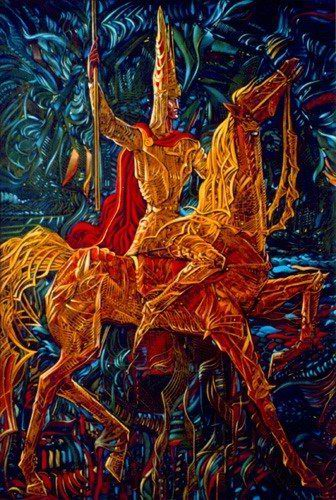
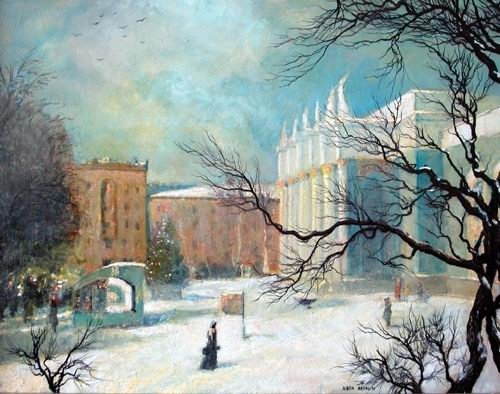
The gold horseman Winter in Karaganda
The Kazakh national music has a long history and rich traditions. Unknown akyns created the folk-lore closely connected with the working life and the struggle for independence. The first place belonged to a song – everyday, ritual, lyrical, shepherd, a song-story. The people’s wisdom, philosophy, moral are commemorated in a song. Music would accompany the life of nomads. They were ingenious people and used to make their instruments practically of any material that could be found in the steppe: rush, wood, clay, leather, bone, horns, hoofs. The Kazakh people have more than 20 musical instruments – dombra, kobyz, sybyzgy, daulpaz and othersThe Kazakh national music has a long history and rich traditions. Unknown akyns created the folk-lore closely connected with the working life and the struggle for independence.
O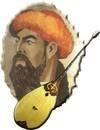 ne
of the greatest Kazakh composers wasKurmangazy.
He was the founder of the national instrumental music.
He was a genius, a proud and brave son of the Great steppe. He was
optimistic, full of human qualities and had a remarkable talent of
a composer.
He is famous for creating a bright original style of the dombra
playing. He created more than 60 kuys full of steppe sounds, smell
and colours, fresh air, rhythm and harmony.
ne
of the greatest Kazakh composers wasKurmangazy.
He was the founder of the national instrumental music.
He was a genius, a proud and brave son of the Great steppe. He was
optimistic, full of human qualities and had a remarkable talent of
a composer.
He is famous for creating a bright original style of the dombra
playing. He created more than 60 kuys full of steppe sounds, smell
and colours, fresh air, rhythm and harmony.
E vgeny
Brusilovsky
(1905 – 1981) was an outstanding composer who created the first
Kazakh opera “Kyz-Zhibek” in 1934. He devoted his life and
talent to the Kazakh musical culture and will never be forgotten in
the country. He graduated from Leningrad Conservatory and came to
Kazakhstan where he plunged into studies of national musical wealth.
A passionate talent inspired Brussilovsky to concerts, symphonies,
cantatas, songs and romances, pearls like romantic elegy "Two
Swallows". "Kyz Zhibek", "Er Targyn" and
"Dudarai" are widely recognized as peaks of national
music. Eugeny Brussilovsky is one of the authors of National Anthem
of the Republic of Kazakhstan.
vgeny
Brusilovsky
(1905 – 1981) was an outstanding composer who created the first
Kazakh opera “Kyz-Zhibek” in 1934. He devoted his life and
talent to the Kazakh musical culture and will never be forgotten in
the country. He graduated from Leningrad Conservatory and came to
Kazakhstan where he plunged into studies of national musical wealth.
A passionate talent inspired Brussilovsky to concerts, symphonies,
cantatas, songs and romances, pearls like romantic elegy "Two
Swallows". "Kyz Zhibek", "Er Targyn" and
"Dudarai" are widely recognized as peaks of national
music. Eugeny Brussilovsky is one of the authors of National Anthem
of the Republic of Kazakhstan.
A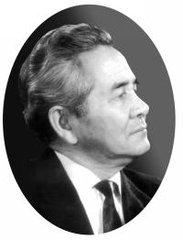 khmet
Zhubanov
(1906 – 1968) was a talented composer, a conductor,
teacher and promoter of young musicians. His best works “Abai”,
“Kazakh dances”, “Kurmangazy” were highly appreciated by the
audience.
khmet
Zhubanov
(1906 – 1968) was a talented composer, a conductor,
teacher and promoter of young musicians. His best works “Abai”,
“Kazakh dances”, “Kurmangazy” were highly appreciated by the
audience.
Akhmet Zhubanov got down in Kazakh culture history as the founder of Kurmangazy Orchestra - a company of world standards. He graduated from Leningrad Conservatory and returned home. He is an author of "Abai" opera (with Latiff Khamidi as co-author), choral and instrumental compositions, romances and music for movies, creator of cultural masterpieces. He was Doctor of Art, academician, a friend of Zatayevic (collector of Kazakh music folklore), the author of "Kurmangazy", "Life and Creative Work of Kazakh National Composers", "Century Strings " and "Nightingales". Akhmet Zhubanov made an invaluable contribution to Kazakh musical heritage - 28 national kuys were recorded by him.
Before the 19th century, Kazakhstan had no written language of its own. Literature took the form of long oral poems, recited by akyns in a song-like chant and accompanied by traditional instruments like drums and a dombra. Recitals and aitys are still very popular.
T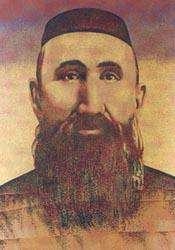
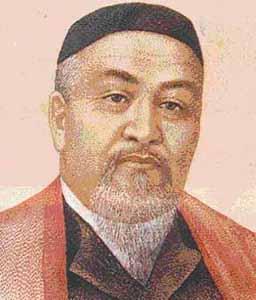 he
founder of modern Kazakh literature isAbay
Kunanbaev
(1845 – 1904), a great poet, educator and akyn. He translated
works by Pushkin, Lermontov, Göthe, Tolstoy and other poets and
writers into Kazakh. His works urge
people to labour and to struggle for reorganization of life. A lot
of his poems are dedicated to a new attitude
to the family, to the parents’ duty, to the education of a young
generation. His
most famous philosophic work, "Words of edification", is
said to be a spiritual commandment to the Kazakh nation. His main
contribution to Kazakh culture and folklore is his poetry, which
expresses strong feelings and grew out of Kazakh folk culture.
he
founder of modern Kazakh literature isAbay
Kunanbaev
(1845 – 1904), a great poet, educator and akyn. He translated
works by Pushkin, Lermontov, Göthe, Tolstoy and other poets and
writers into Kazakh. His works urge
people to labour and to struggle for reorganization of life. A lot
of his poems are dedicated to a new attitude
to the family, to the parents’ duty, to the education of a young
generation. His
most famous philosophic work, "Words of edification", is
said to be a spiritual commandment to the Kazakh nation. His main
contribution to Kazakh culture and folklore is his poetry, which
expresses strong feelings and grew out of Kazakh folk culture.
Shakarim Kudaiberdiev was Abai’s nephew and was brought up by his great uncle. He traveled a lot, learnt languages. Shakarim translated the works by Pushkin, Tolstoy, Beecher Stow, Fizuli, Navoi, Lermontov, Nekrasov and Byron. He wrote the novel “Chronicle of Kazakh Khans”, the philosophical treatise “Mohammedanism”. He returned boundless freedom to the Kazakh literary language. There is a peculiar charm and a fascinating ease in his lines.
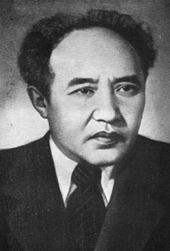 Mukhtar
Auezov
(1897 – 1961) was a distinguished Kazakh writer, playwright
and statesman. He wrote over 20 plays, many short stories and
novels. His writing career began with the play “Enlik-Kebek”
(1917), based on the folk legend of tragic love which bears a great
resemblance to Romeo
and Juliet.
His works are translated into many languages and have enormous
influence on the Kazakh literature.
Mukhtar
Auezov
(1897 – 1961) was a distinguished Kazakh writer, playwright
and statesman. He wrote over 20 plays, many short stories and
novels. His writing career began with the play “Enlik-Kebek”
(1917), based on the folk legend of tragic love which bears a great
resemblance to Romeo
and Juliet.
His works are translated into many languages and have enormous
influence on the Kazakh literature.
Later Auezov changed his focus to writing novels. Two novels – “Abay” and “The Path of Abay” - dealing with the life of Kazakh poet Abay Kunanbaev were the product of the last twenty years of his life. Auezov's other projects included drawing and translating literature into the Kazakh language. His translations of Tolstoy, Gogol, Chekhov, Shakespeare, London are masterpieces that greatly enriched the Kazakh literature.
